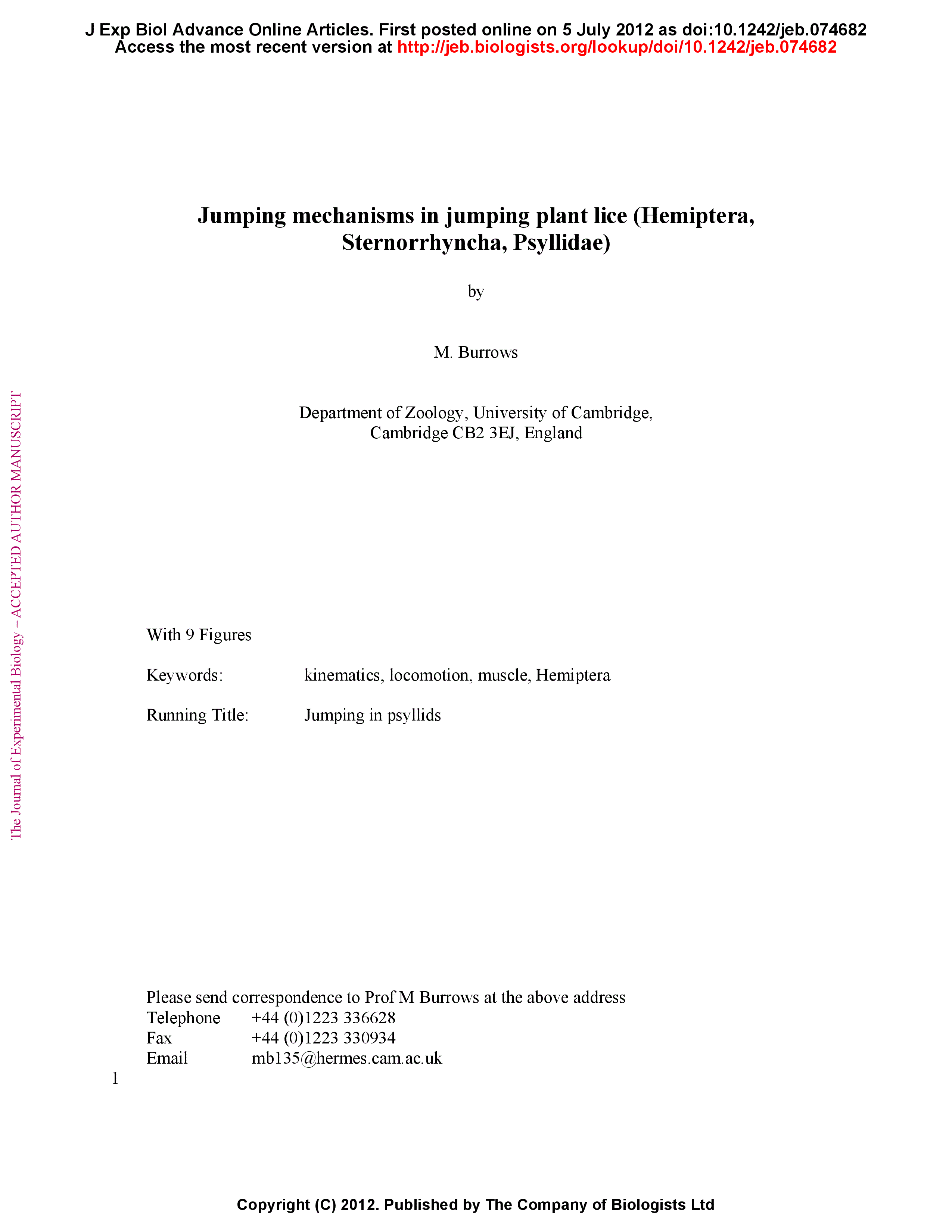Summary
Jumping mechanisms and performance were analysed in three species of psyllids (Hemiptera, Sternorrhyncha) that ranged from 2 to 4 mm in body length and from 0.7 to 2.8 mg in weight. Jumping was propelled by rapid movements of the short hind legs that were only 10-20% longer than the other legs and 61-77% of body length. Power was provided by large thoracic muscles that depressed the trochantera so that the two hind legs moved in parallel planes on either side of the body. These movements accelerated the body to take-off in 0.9 ms in the smallest psyllid and 1.7 ms in the largest, but in all species imparted a rapid forward rotation so that at take-off the head pointed downwards, subtending angles of about -60 degrees relative to the ground. The front legs thus supported the body just before take-off and either lost contact with the ground at the same time as, or even after the hind legs. In the best jumps from the horizontal, take-off velocity reached 2.7 m s-1 and the trajectory was steep at 62-80 degrees. Once airborne the body spun rapidly at rates up to 336 Hz in the pitch plane. In many jumps the wings did not open to provide stabilisation, but some jumps led directly to sustained flight. In their best jumps the smallest species experienced a force of 637 g. The largest species had an energy requirement of 13 µJ, a power output of 13 mW and exerted a force of nearly 10 mN. In a rare jumping strategy seen in only 2 of 211 jumps analysed, the femoro-tibial joints extended further and resulted in the head pointing upwards at take-off and the spin rate being greatly reduced.








